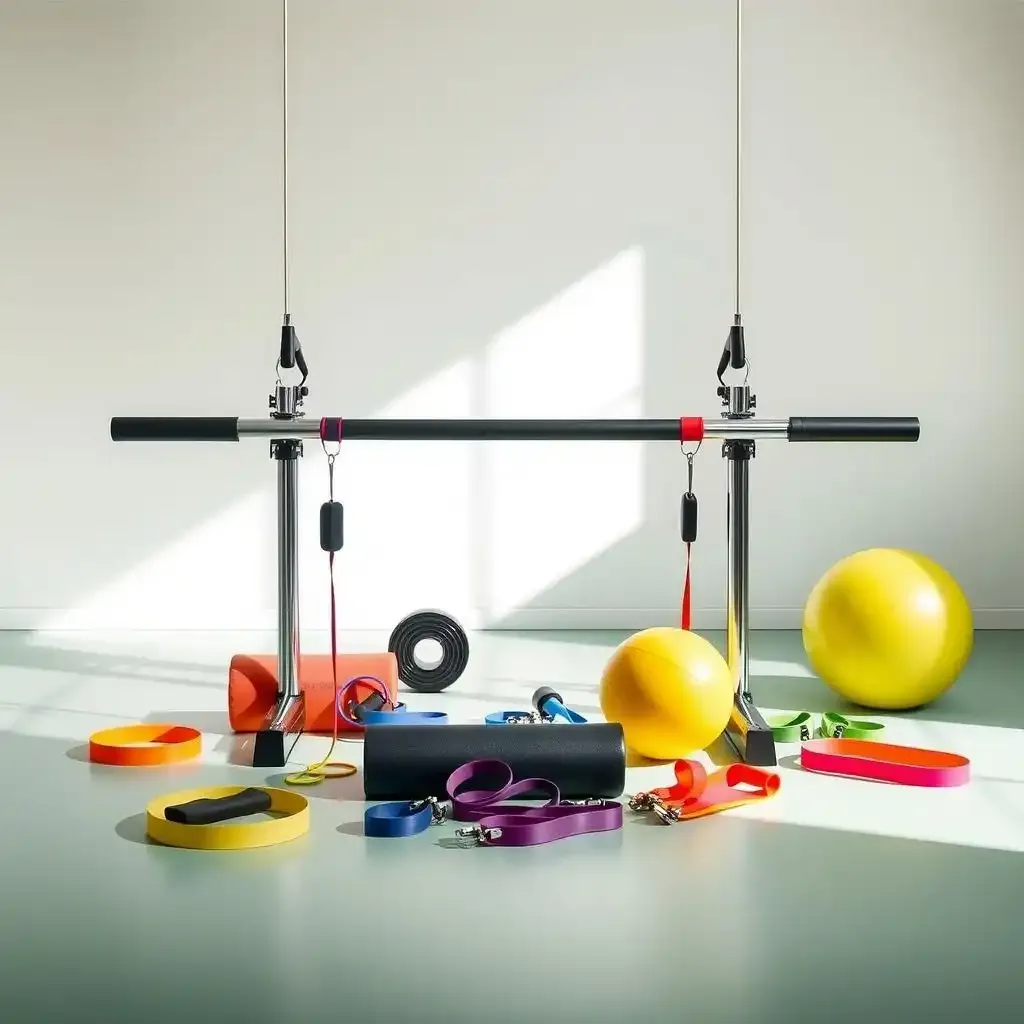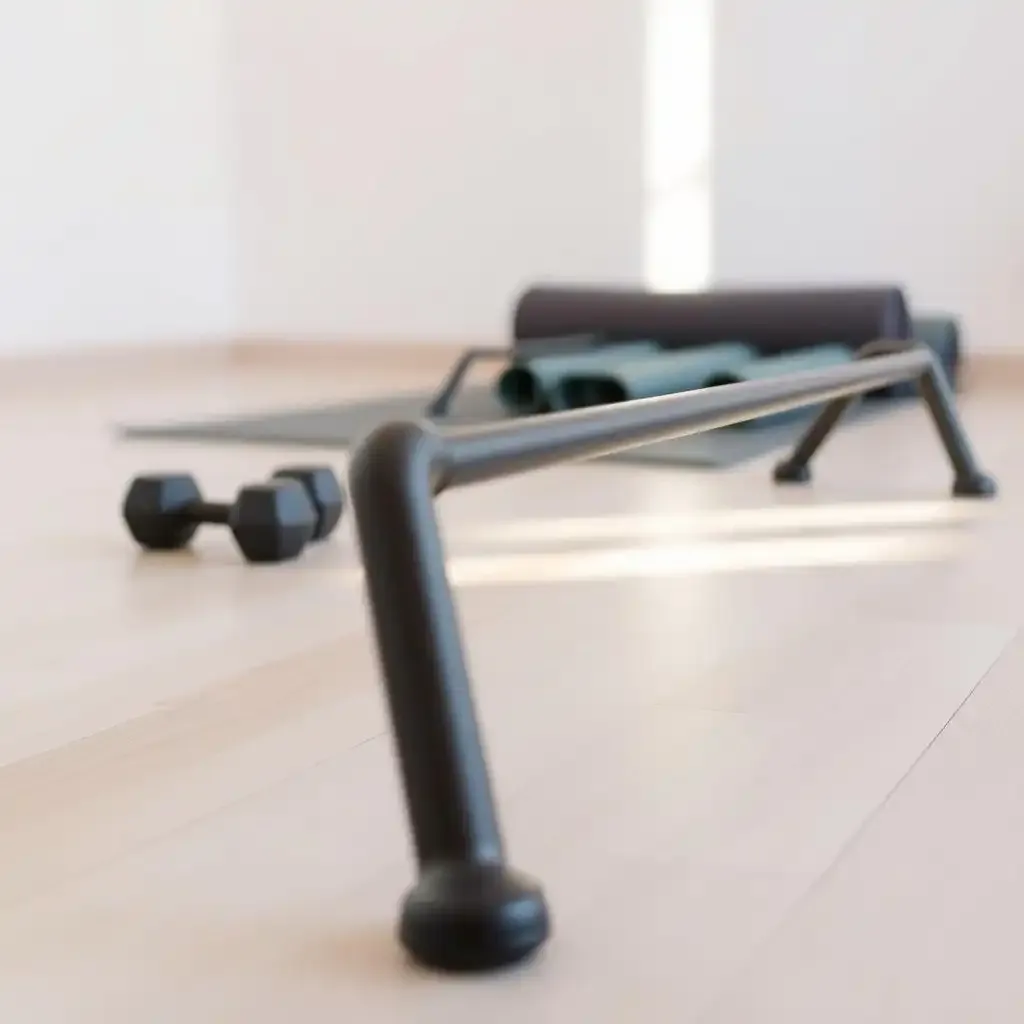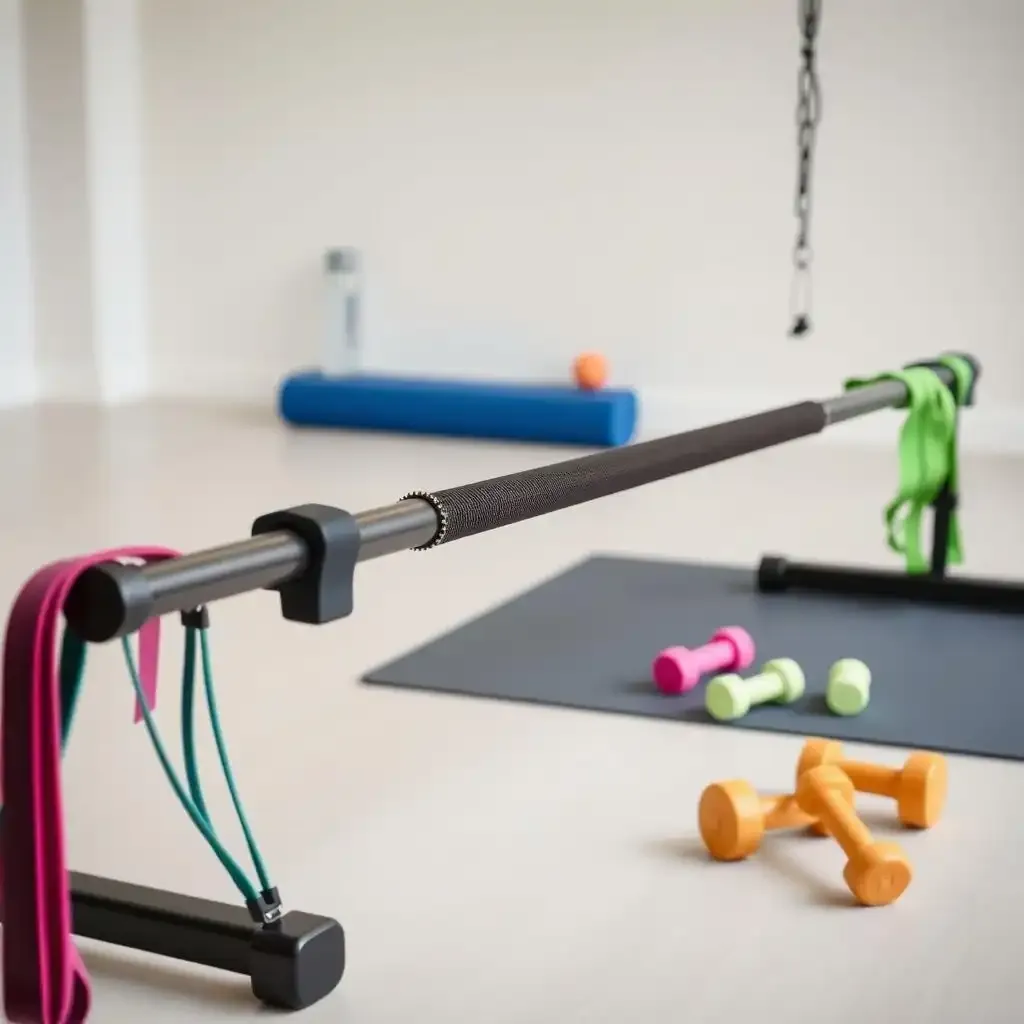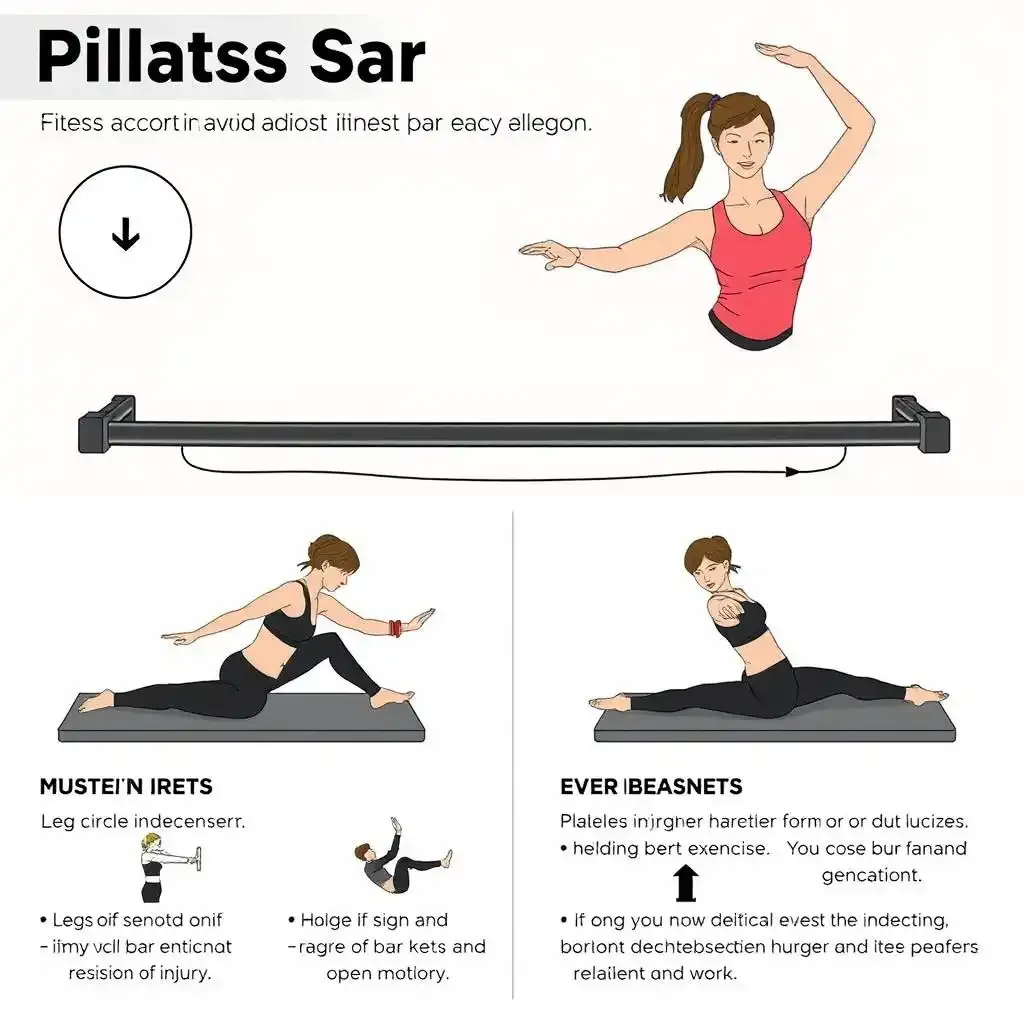Table of Contents
Ready to sculpt a stronger, more flexible you? Then prepare to embrace the amazing world of pilates bar workouts! At kizworld, we believe that fitness should be accessible and enjoyable, and the Pilates bar offers a fantastic way to achieve your fitness goals. Forget boring routines; the Pilates bar introduces a dynamic element to your workouts, challenging your core and toning muscles in ways you never thought possible. This comprehensive guide will walk you through everything you need to know about Pilates bar workouts, from beginner-friendly exercises to more advanced routines. We'll explore the benefits, investigate into specific exercises, and show you how to modify them to suit your fitness level. Whether you're a seasoned fitness enthusiast or just starting your fitness process, this guide has something for you. So, grab your Pilates bar, and let's launch on this exciting fitness experience together! Prepare to be amazed by what your body can achieve. This Pilates bar workout guide is your roadmap to a stronger, more confident you.
Awesome Pilates Bar Workout: Tone & Strengthen
Pilates Bar Workout: Getting Started
Finding Your Pilates Bar
Hey there, fellow fitness adventurers! So, you're ready to investigate into the world of Pilates bar workouts? Awesome! First things first: you'll need a Pilates bar. Think of it as a magic wand for your muscles – it adds a little extra oomph to your exercises, making them more challenging and effective. You can usually find them at sporting goods stores or online. Don't worry if you don't have fancy equipment; you can totally modify exercises to work with what you have. Remember, it's the effort that counts, not the equipment! For more info on Pilates equipment, check out our other article: Pilates Equipment.
Pilates Bar Type | Pros | Cons |
|---|---|---|
Standard Bar | Affordable, widely available | Can be less versatile than some other types |
Adjustable Bar | Allows for varied resistance levels | More expensive |
Your First Pilates Bar Session: A Gentle Introduction
Okay, so you've got your bar. Now what? Don't jump in headfirst! Start slow and steady. Think of it like learning to ride a bike – you wouldn't try a wheelie on your first go, right? Begin with basic movements, focusing on proper form. This is way more important than how many reps you do. Poor form can lead to injuries, and nobody wants that! Start with a few sets of 10-12 repetitions of each exercise. Listen to your body, and if something hurts, stop! It's okay to take breaks. This is a marathon, not a sprint. Read more about how Pilates should feel on our related post: Should Pilates Make You Sore?
- Find a comfortable space
- Wear comfortable clothes and shoes.
- Have water nearby.
Building Your Pilates Bar Workout Routine
Once you feel comfortable with the basics, you can start building a more structured routine. I recommend starting with a 20-30 minute workout, 2-3 times a week. As you get stronger, you can increase the duration and intensity. Remember to incorporate a variety of exercises to target different muscle groups. Don't focus on just one area; think of your body as a team – every muscle plays a role! A well-rounded routine will help you achieve better overall strength and flexibility. For more tips on building a killer Pilates routine, check out our guide to Pilates Exercises. You'll find a variety of exercises to suit all fitness levels.
Mastering Basic Pilates Bar Exercises
The Pilates Bar Roll-Down: Your Core's New Best Friend
Okay, let's start with the roll-down. Imagine your spine is a stack of perfectly balanced pancakes. You're going to gently roll those pancakes down, one by one, starting from the top (your head). Hold your Pilates bar lightly, arms extended. Slowly curl your head and shoulders forward, letting your spine round like a graceful cat. Then, just as gracefully, roll back up, vertebra by vertebra, engaging your core muscles the whole time. It's like a slow-motion wave, all controlled and smooth. Don't just flop! This isn't a dramatic stage fall; it's a precise movement. This exercise is *amazing* for strengthening your core – your body's ability center. It's the foundation for everything else, so get this right and the rest will follow! Need more tips on core strengthening? Check out our article on what Pilates does for the body.
- Stand tall with feet hip-width apart.
- Hold the Pilates bar lightly, arms straight.
- Slowly roll down, vertebra by vertebra.
- Slowly roll back up, engaging your core.
Leg Circles and Pulses: Your Thighs Will Thank You
Next up, leg circles! Think of your legs as graceful pendulums, swinging smoothly in a circle. Lay on your back, knees bent, feet flat on the floor. Extend one leg towards the ceiling, holding the Pilates bar close to your body. Slowly make small circles with your leg, keeping it straight and controlled. Then, switch directions. After the circles, do some pulses—small up-and-down movements—really focusing on the burn in your thigh muscles. These are fantastic for toning and strengthening your legs, and they’re surprisingly more challenging than they look! It's a subtle burn, but a powerful one. Want more exercises for leg strength? Learn more about here.
Exercise | Muscle Group | Reps |
|---|---|---|
Leg Circles | Inner and Outer Thighs | 10-12 per leg, each direction |
Leg Pulses | Quadriceps and Hamstrings | 15-20 per leg |
Mastering Basic Pilates Bar Exercises
Advanced Pilates Bar Workout Routines
Stepping Up Your Pilates Bar Game: Adding Intensity
Hey there, Pilates pals! So you've mastered the basics? Fantastic! Now it's time to kick things up a notch. Think of it like this: you've learned to walk, now it's time to run (or maybe even do some fancy parkour moves – okay, maybe not parkour, but you get the idea!). We're going to add some more challenging exercises and increase the intensity. This isn't about becoming a superhuman overnight, it's about gradual progression. We'll be incorporating more complex movements and longer sequences, really pushing those muscles to their limits (in a good way, of course!). Remember to listen to your body – it's a wise advisor. If anything feels too intense, dial it back. We're aiming for progress, not pain! For more tips on gradually increasing your workout intensity, check out our article on Pilates intensity.
- Increase repetitions
- Add more sets
- Try more challenging variations
Pilates Bar Workout: Incorporating Weights and Resistance Bands
Now, we're getting into the seriously fun stuff. Adding extra weight or resistance bands is like giving your muscles a superhero boost. It's a fantastic way to increase the challenge and build even more strength and endurance. You can hold light weights while doing your roll-downs or leg circles, or use resistance bands to add extra resistance to your leg pulses or arm movements. Start with lighter weights or bands and gradually increase as you get stronger. Remember, consistency is key. It's not about how much you lift, but how consistently you challenge yourself. A little goes a long way! Thinking about adding other equipment? Here's more on .
Equipment | How to Use It | Benefits |
|---|---|---|
Light Weights | Hold during exercises | Increased strength, endurance |
Resistance Bands | Wrap around legs or arms | Increased resistance, muscle activation |
Pilates Bar Workout: Advanced Exercises and Combinations
Time for some seriously advanced moves! We're talking about combining exercises, creating flowing sequences, and really pushing your limits. Think of it as creating your own Pilates choreography! You might combine a roll-down with a series of leg pulses, or incorporate arm movements into your leg circles. The possibilities are endless! Start by combining two or three exercises you're already comfortable with, and gradually add more as you get stronger and more confident. Remember to focus on your form and control – this is where the real challenge lies. It’s all about precision, not speed. Mastering these advanced sequences is like learning a beautiful dance with your body. For more ideas on advanced Pilates exercises, check out our post on .
Advanced Pilates Bar Workout Routines
Pilates Bar Workout: Modifications and Safety
Adjusting to Your Fitness Level
Hey there! So you're ready to rock this Pilates bar workout? Awesome! But remember, we're all different. What's a breeze for one person might be a real challenge for another. That's why modifications are your best friend. Think of your body as a super-customizable machine – you can tweak the settings to fit your needs perfectly. If an exercise feels too hard, don't push yourself. Start with fewer repetitions, or use a lighter bar (or even skip it entirely for some exercises!). You can also modify the range of motion. For instance, instead of fully extending your leg in a leg circle, you could just lift it halfway. The goal is to feel the burn in the right places without causing pain.
- Reduce repetitions
- Shorten the range of motion
- Use lighter weights or resistance
- Take more breaks
Listening to Your Body: The Ultimate Pilates Tip
This is HUGE. Your body is super smart, it’ll let you know when something's not right. Pain is your body's way of screaming "STOP!" Don't ignore it. That's not tough; that's stupid. If you feel any sharp or unusual pain, stop the exercise immediately. Rest, and if the pain persists, see a doctor or physical therapist. Remember, consistency is more important than intensity. It's better to do a few exercises correctly than to hurt yourself trying to do too much too soon. Want to know more about listening to your body? Check out our guide to . Building strength is a marathon, not a sprint!
Pain Type | Possible Cause | Action |
|---|---|---|
Sharp, stabbing pain | Injury | Stop immediately, seek medical advice |
Achy, mild pain | Muscle soreness | Rest, ice, stretch |
Safety First: Proper Form and Technique
Proper form is like the secret sauce of a Pilates bar workout. It's what makes the exercises effective and safe. Think of it like this: if you're building a house, you wouldn't use crooked bricks, would you? Same thing with your body. Sloppy form can lead to injuries. Watch videos, read instructions carefully, and if possible, take a class from a qualified instructor. They can show you the proper techniques, correct your form, and help you avoid common mistakes. Don't be afraid to ask questions – there’s no such thing as a silly question when it comes to your health! For more tips on proper form, check out our article on . Remember, quality over quantity every time!
Pilates Bar Workout: Modifications and Safety
Final Thought
The Pilates bar workout is a versatile and effective tool for achieving a stronger, more flexible body. Remember to listen to your body, start slowly, and gradually increase the intensity and duration of your workouts. With consistent practice and the right technique, you'll be amazed by the results. So, keep moving, keep challenging yourself, and keep enjoying the progression to a healthier, happier you! Don't be afraid to experiment with different exercises and find what works best for your body and goals. Happy training!